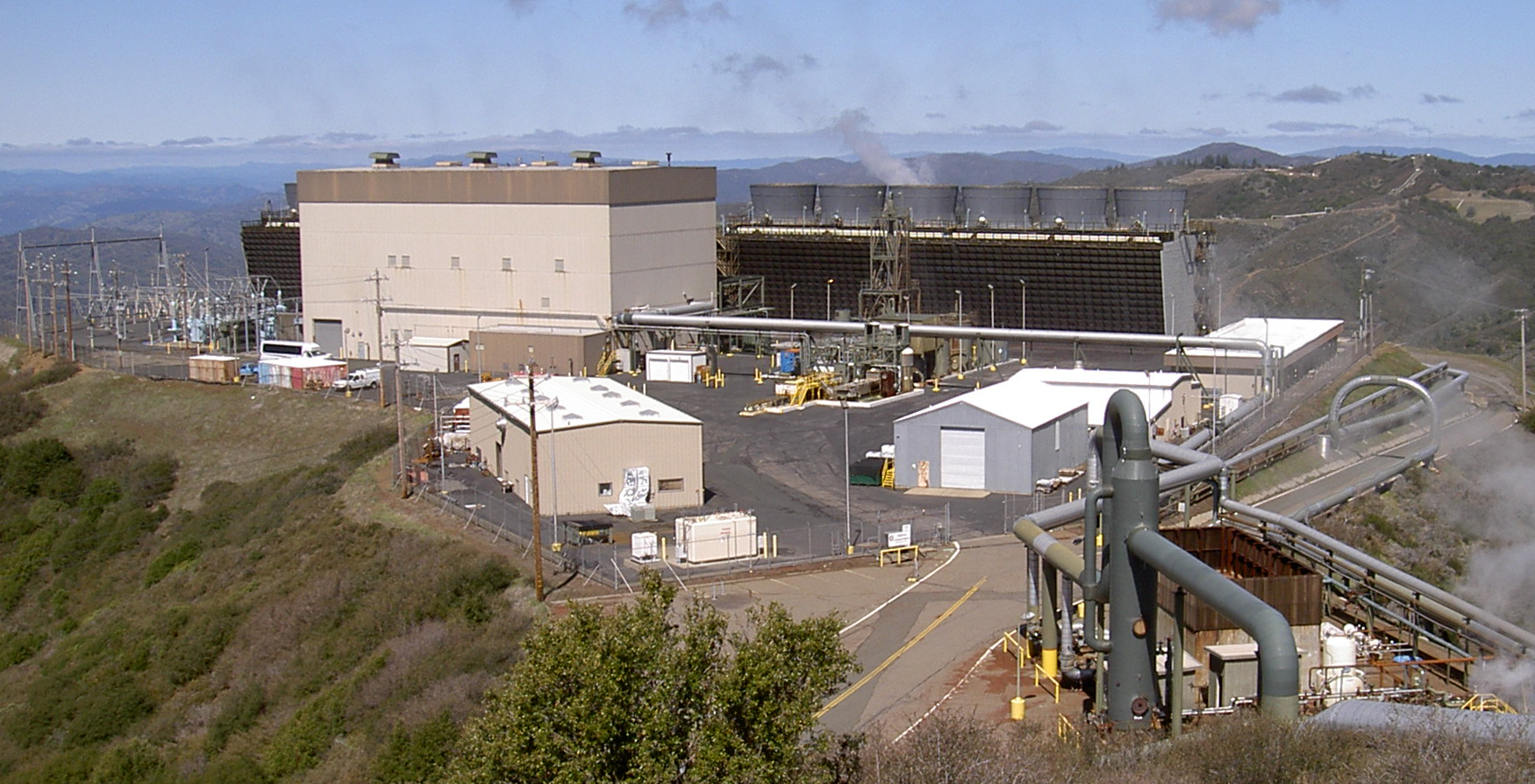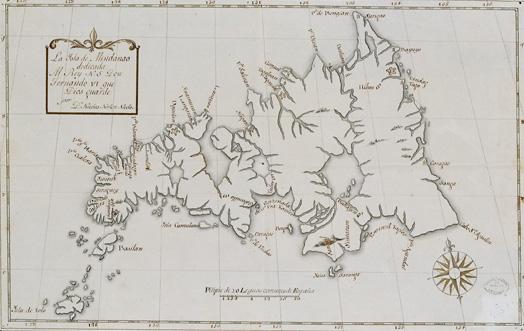|
Geothermal Power In The Philippines
Geothermal power in the Philippines is the country's second largest source of renewable energy, and the fifth largest source of energy overall. Among sources of renewable energy, it is second only to hydroelectric power, although both sources are surpassed by the amount of energy drawn from coal, oil, and natural gas in that order. The Philippines is one of the world's top producers of geothermal power, owing to its location along the Ring of Fire zone of Pacific volcanoes. The Geothermal Education Office and a 1980 article titled "The Philippines geothermal success story" by Rudolph J. Birsic published in the journal Geothermal Energy noted the remarkable geothermal resources of the Philippines.Birsic, R.JThe Philippines geothermal success story''Geothermal Energy'' (vol. 8, Aug.-Sept. 1980, p. 35-44) During the World Geothermal Congress 2000 held in Beppu, Ōita Prefecture of Japan held from May to June 2000, it was reported that the Philippines is the largest consumer of ... [...More Info...] [...Related Items...] OR: [Wikipedia] [Google] [Baidu] |
Center For Research And Communication
The Center for Research and Communication (CRC) is a consultancy firm and think tank in the Philippines best known for being one of the earliest Philippine think-tanks, with expertise in business, economics, international relations, and education, as well as more recently food and agribusiness, energy, data science, analytics, and transportation and logistics, Associated with the University of Asia and the Pacific, which evolved in the 1990s out of the educational initiatives it had undertaken since its inception, many of its consultants have held government policy-making posts, or been tapped to advise the Philippine government on economic policy while also teaching at the university. It was very influential in the 1970s, when it was one of the few institutions publishing foundational textbooks on economics through its subsidiary, sinag-tala publishers.The graduate degree programs it established in 1989 were later spun off to become the University of Asia and the Pacific in 1995 ... [...More Info...] [...Related Items...] OR: [Wikipedia] [Google] [Baidu] |
Ring Of Fire
The Ring of Fire (also known as the Pacific Ring of Fire, the Rim of Fire, the Girdle of Fire or the Circum-Pacific belt) is a tectonic belt of volcanoes and earthquakes. It is about long and up to about wide, and surrounds most of the Pacific Ocean. The Ring of Fire contains between 750 and 915 active or dormant volcanoes, around two-thirds of the world total. The exact number of volcanoes within the Ring of Fire depends on which regions are included. About 90% of the world's earthquakes, including most of its largest, occur within the belt. The Ring of Fire is not a single geological structure. It was created by the subduction of different tectonic plates at convergent boundaries around the Pacific Ocean. These include: the Antarctic plate, Antarctic, Nazca plate, Nazca and Cocos plate, Cocos plates subducting beneath the South American plate; the Pacific plate, Pacific and Juan de Fuca plate, Juan de Fuca plates beneath the North American plate; the Philippine Sea pla ... [...More Info...] [...Related Items...] OR: [Wikipedia] [Google] [Baidu] |
Geothermal Energy
Geothermal energy is thermal energy extracted from the crust (geology), crust. It combines energy from the formation of the planet and from radioactive decay. Geothermal energy has been exploited as a source of heat and/or electric power for millennia. Geothermal heating, using water from hot springs, for example, has been used for bathing since Paleolithic times and for space heating since Roman times. Geothermal power (generation of electricity from geothermal energy), has been used since the 20th century. Unlike wind and solar energy, geothermal plants produce power at a constant rate, without regard to weather conditions. Geothermal resources are theoretically more than adequate to supply humanity's energy needs. Most extraction occurs in areas near tectonic plate boundaries. The cost of generating geothermal power decreased by 25% during the 1980s and 1990s. Technological advances continued to reduce costs and thereby expand the amount of viable resources. In 2021, the US ... [...More Info...] [...Related Items...] OR: [Wikipedia] [Google] [Baidu] |
Philippines
The Philippines, officially the Republic of the Philippines, is an Archipelagic state, archipelagic country in Southeast Asia. Located in the western Pacific Ocean, it consists of List of islands of the Philippines, 7,641 islands, with a total area of roughly 300,000 square kilometers, which are broadly categorized in Island groups of the Philippines, three main geographical divisions from north to south: Luzon, Visayas, and Mindanao. With a population of over 110 million, it is the world's List of countries and dependencies by population, twelfth-most-populous country. The Philippines is bounded by the South China Sea to the west, the Philippine Sea to the east, and the Celebes Sea to the south. It shares maritime borders with Taiwan to the north, Japan to the northeast, Palau to the east and southeast, Indonesia to the south, Malaysia to the southwest, Vietnam to the west, and China to the northwest. It has Ethnic groups in the Philippines, diverse ethnicities and Culture o ... [...More Info...] [...Related Items...] OR: [Wikipedia] [Google] [Baidu] |
Beppu, Ōita
file:Beppu City Hall.jpg, 270px, Beppu City Hall is a city in Ōita Prefecture on the island of Kyushu, Japan. As of November 30, 2023, the city had a population of 113,045 in 62,702 households, and a population density of 900 persons per km2. The total area of the city is . Beppu is famous for its hot springs. In 2024, Beppu celebrated its centenary as a city. Geography Beppu is situated at the west end of Beppu Bay, around the east central prefecture. Adjacent municipalities include Ōita, Ōita , Ōita (the prefectural capital), Usa, Ōita , Usa, Yufu, Ōita , Yufu, and Hiji, Ōita , Hiji. The east area of the city consists of an alluvial fan as well as alluvial plain, made with rivers flowing into Beppu Bay, namely Asami River, Haruki River and Sakai River. The main urban area of Beppu has been formed within this relatively narrow land which spans approximately 5 km from east to west and 10 km from north to south. The west area of the city includes a number of sc ... [...More Info...] [...Related Items...] OR: [Wikipedia] [Google] [Baidu] |
Geothermal Energy In The United States
Geothermal energy in the United States was first used for electric power production in 1960. The Geysers in Sonoma and Lake counties, California was developed into what is now the largest geothermal steam electrical plant in the world, at 1,517 megawatts. Other geothermal steam fields are known in the western United States and Alaska. Geothermally generated electric power can be dispatchable to follow the demands of changing loads. Environmental impact of this energy source includes hydrogen sulfide emissions, corrosive or saline chemicals discharged in waste water, possible seismic effects from water injection into rock formations, waste heat and noise. History Archaeological evidence documents that geothermal resources have been in use in the US for more than 10,000 years. Paleo-Indians first used geothermal hot springs for warmth, cleansing, and minerals. Pacific Gas and Electric opened the US' first commercial geothermal power plant at The Geysers in California in Septe ... [...More Info...] [...Related Items...] OR: [Wikipedia] [Google] [Baidu] |
Luzon
Luzon ( , ) is the largest and most populous List of islands in the Philippines, island in the Philippines. Located in the northern portion of the List of islands of the Philippines, Philippine archipelago, it is the economic and political center of the nation, being home to the country's capital city, Manila, as well as Quezon City, the country's most populous city. With a population of 64 million , it contains 52.5% of the country's total population and is the List of islands by population, 4th most populous island in the world. It is the List of islands by area, 15th largest island in the world by land area. ''Luzon'' may also refer to one of the three primary Island groups of the Philippines, island groups in the country. In this usage, it includes the Luzon Mainland, the Batanes and Babuyan Islands, Babuyan groups of islands to the north, Polillo Islands to the east, and the outlying islands of Catanduanes, Marinduque and Mindoro, among others, to the south. The islands o ... [...More Info...] [...Related Items...] OR: [Wikipedia] [Google] [Baidu] |
Leyte
Leyte ( ) is an island in the Visayas group of islands in the Philippines. It is eighth-largest and sixth-most populous island in the Philippines, with a total population of 2,626,970 as of 2020 census. Since the accessibility of land has been depleted, Leyte has provided countless number of migrants to Mindanao. Most inhabitants are farmers. Fishing is a supplementary activity. Rice and corn (maize) are the main food crops; cash crops include coconuts, abaca, tobacco, bananas, and sugarcane. There are some manganese deposits, and sandstone and limestone are quarried in the northwest. Politically, the island is divided into two provinces: (Northern) Leyte and Southern Leyte. Territorially, Southern Leyte includes the island of Panaon to its south. To the north of Leyte is the island province of Biliran, a former sub-province of Leyte. The major cities of Leyte are Tacloban, on the eastern shore at the northwest corner of Leyte Gulf, and Ormoc, on the west coast. Leyte tod ... [...More Info...] [...Related Items...] OR: [Wikipedia] [Google] [Baidu] |
Negros Island
Negros (, , ) is the fourth largest and third most populous island in the Philippines, with a total land area of . The coastal zone of the southern part of Negros is identified as a site of highest marine biodiversity importance in the Coral Triangle. Negros is one of the many islands of the Visayas, in the central part of the country. The predominant inhabitants of the island region are mainly called Negrenses (locally ''Negrosanons''). As of 2020 census, the total population of Negros is 4,656,893 people. From 2015 to 2017, the whole island was governed as an administrative region officially named the Negros Island Region, which comprised the highly urbanized city of Bacolod and the provinces of Negros Occidental and Negros Oriental, along with its corresponding outlying islands and islets within a total regional area of . It was created on May 29, 2015, by virtue of Executive Order No. 183 issued by President Benigno Aquino III. On August 9, 2017, the region was dis ... [...More Info...] [...Related Items...] OR: [Wikipedia] [Google] [Baidu] |
Mindanao
Mindanao ( ) is the List of islands of the Philippines, second-largest island in the Philippines, after Luzon, and List of islands by population, seventh-most populous island in the world. Located in the southern region of the archipelago, the island is part of an island group of the same name that also includes its adjacent islands, notably the Sulu Archipelago. According to the 2020 census, Mindanao had a population of 26,252,442, while the entire island group had an estimated population of 27,021,036. Mindanao is divided into six administrative regions: the Zamboanga Peninsula, Northern Mindanao, the Caraga region, the Davao Region, Davao region, Soccsksargen, and the autonomous region of Bangsamoro. According to the 2020 census, Davao City is the most populous city on the island, with 1,776,949 people, followed by Zamboanga City (pop. 977,234), Cagayan de Oro (pop. 728,402), General Santos (pop. 697,315), Butuan (pop. 372,910), Iligan (pop. 363,115) and Cotabato City (pop. ... [...More Info...] [...Related Items...] OR: [Wikipedia] [Google] [Baidu] |
Renewable Energy In The Philippines
In 2013, renewable energy provided 26.44% of the total electricity in the Philippines and 19,903 gigawatt-hours (GWh) of electrical energy out of a total demand of 75,266 gigawatt-hours.Membrere L"2013 Philippine power statistics" Accessed 8 April 2016. The Philippines is a net importer of fossil fuels. For the sake of energy security, there is momentum to develop renewable energy sources. The types available include hydropower, Geothermal electricity, geothermal power, wind power, solar power and Biofuel, biomass power. The government of the Philippines has legislated a number of policies in order to increase the use of renewable energy by the country. The government has committed to raising to 50% the contribution of renewables of its total electricity generating capacity, with 15.3 gigawatts (GW) by 2030. The move would help the country in its commitment to reduce its carbon emissions by 75% by 2030. Background There is momentum to decrease reliance on fossil fuels due ... [...More Info...] [...Related Items...] OR: [Wikipedia] [Google] [Baidu] |





